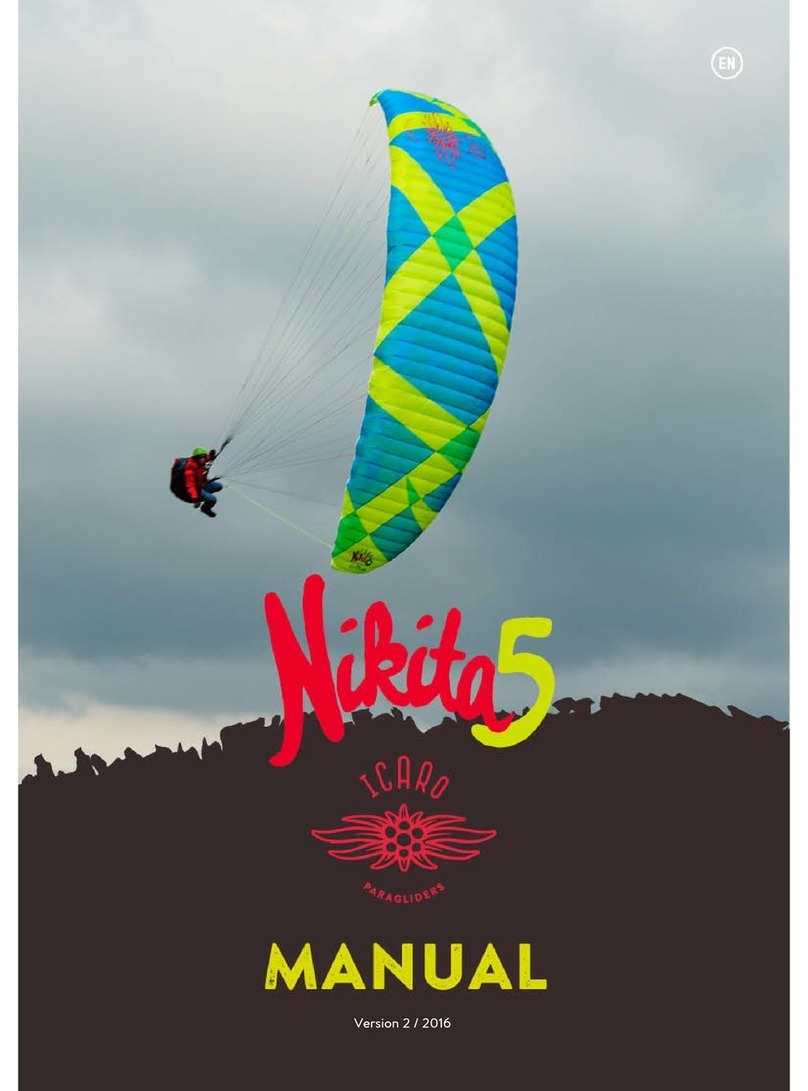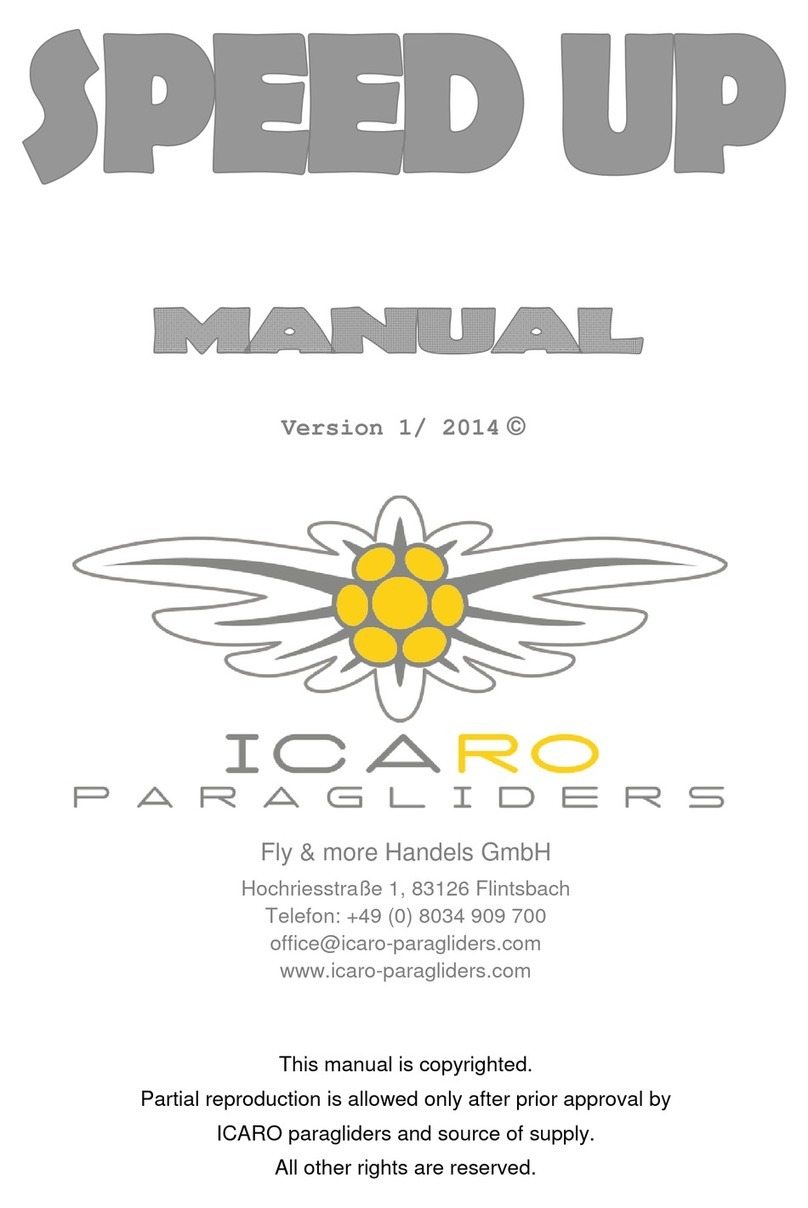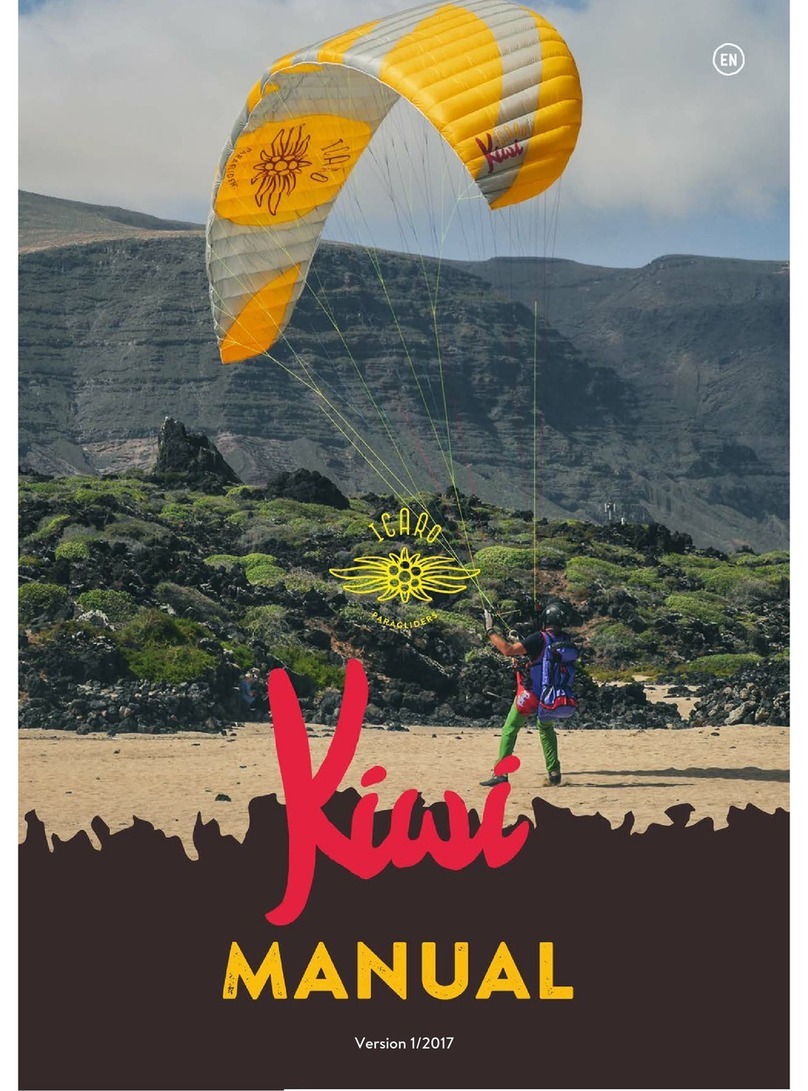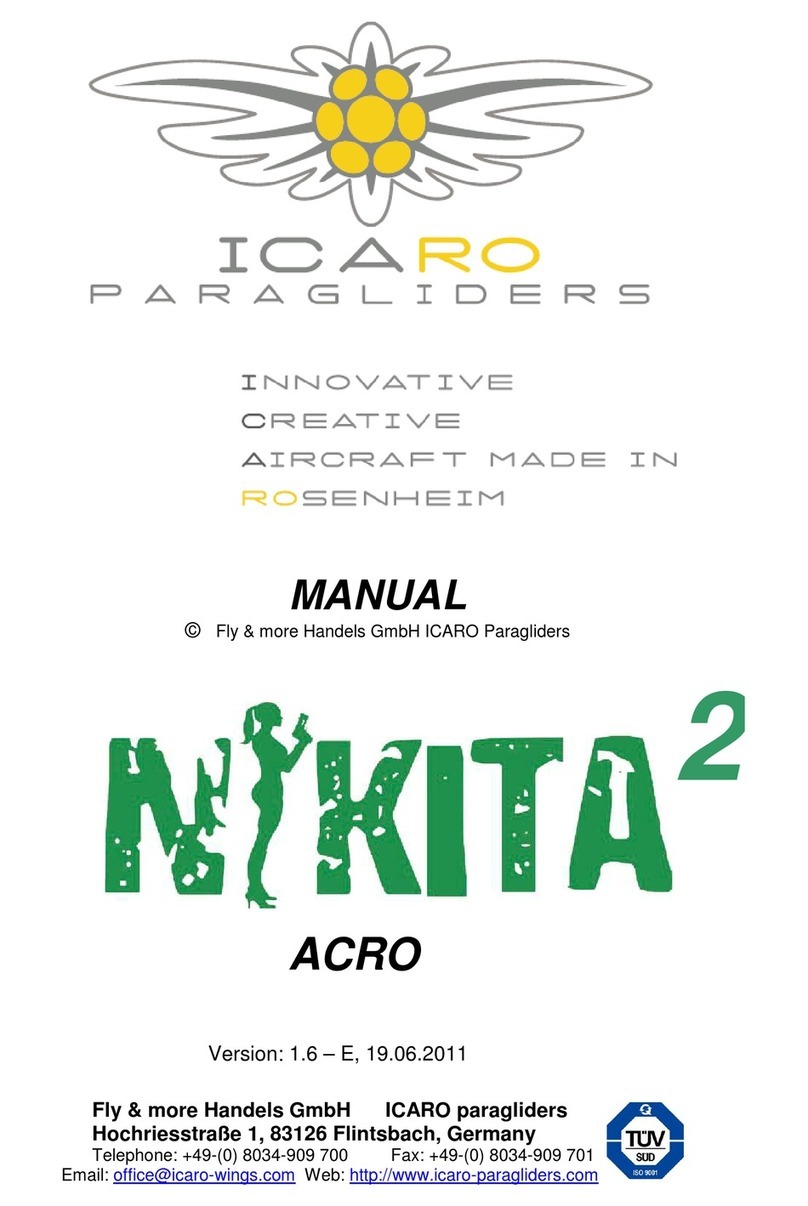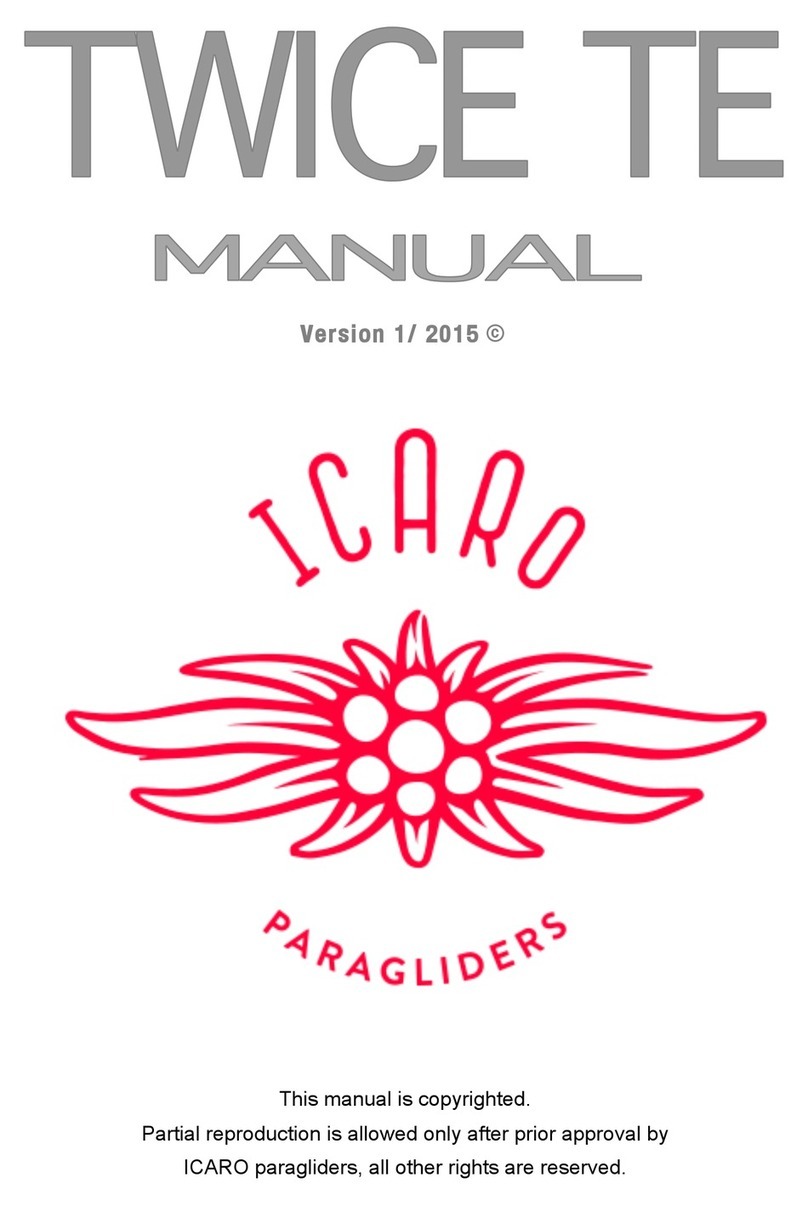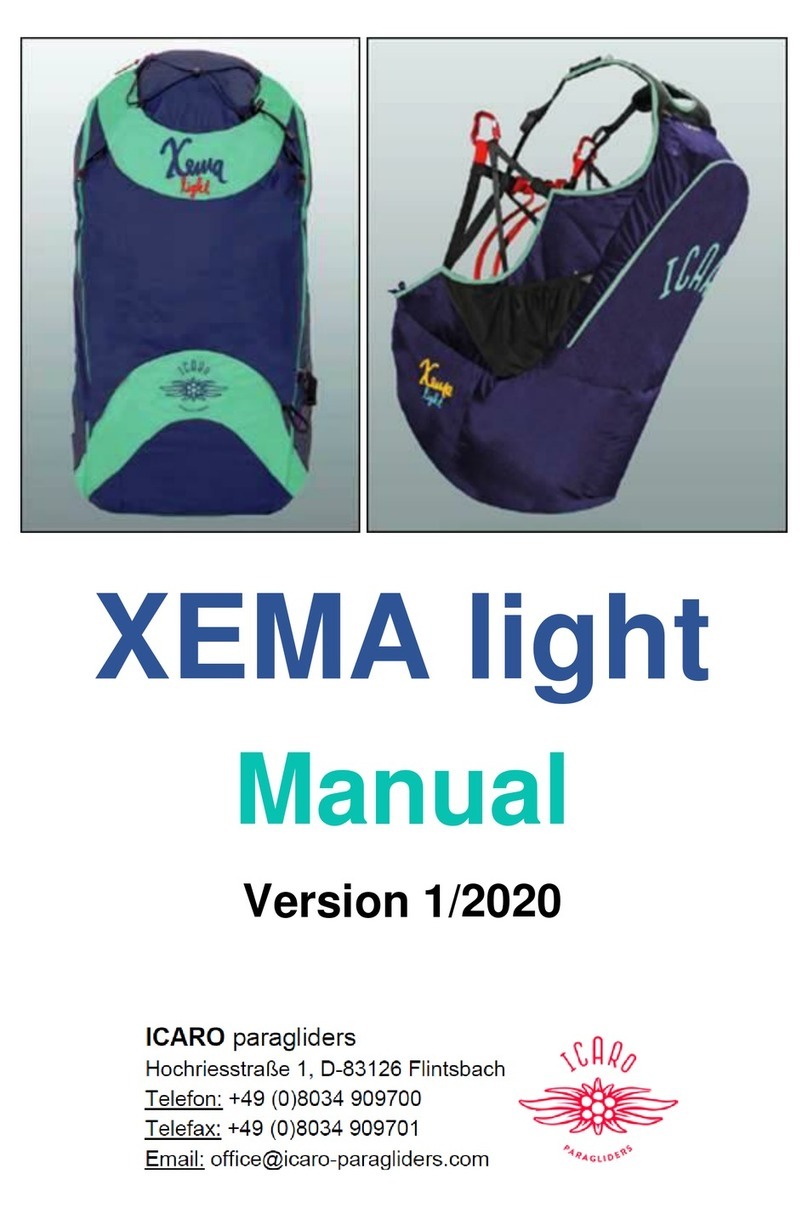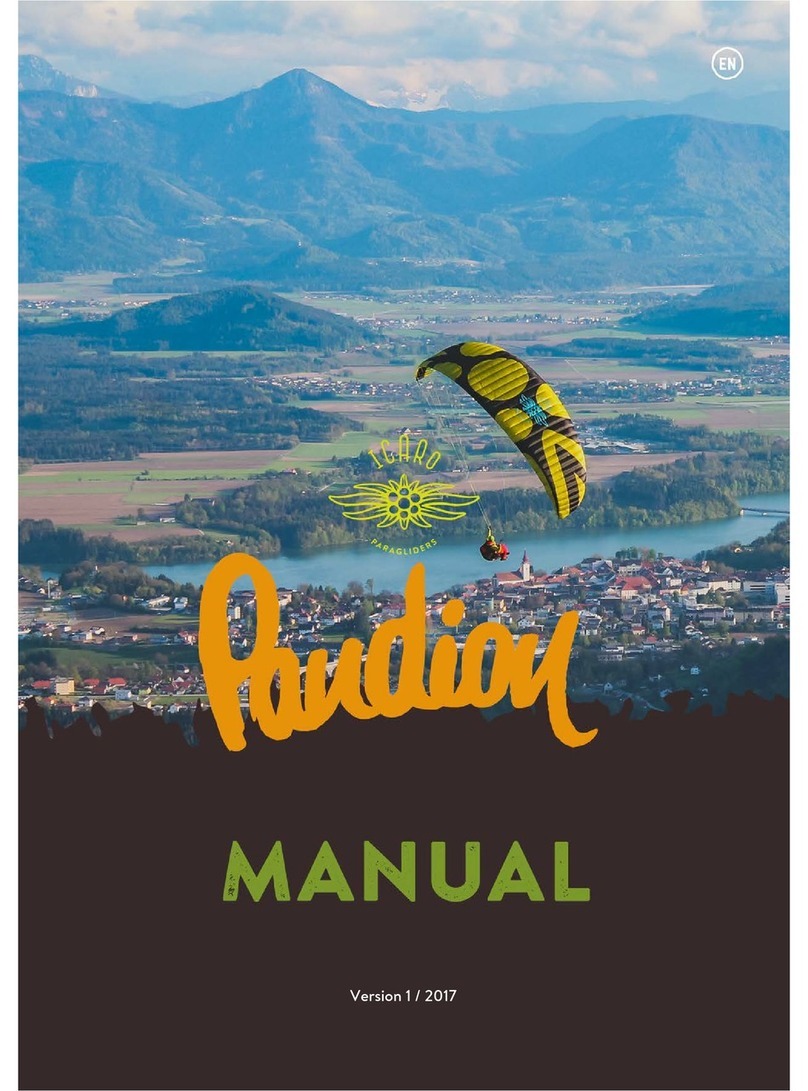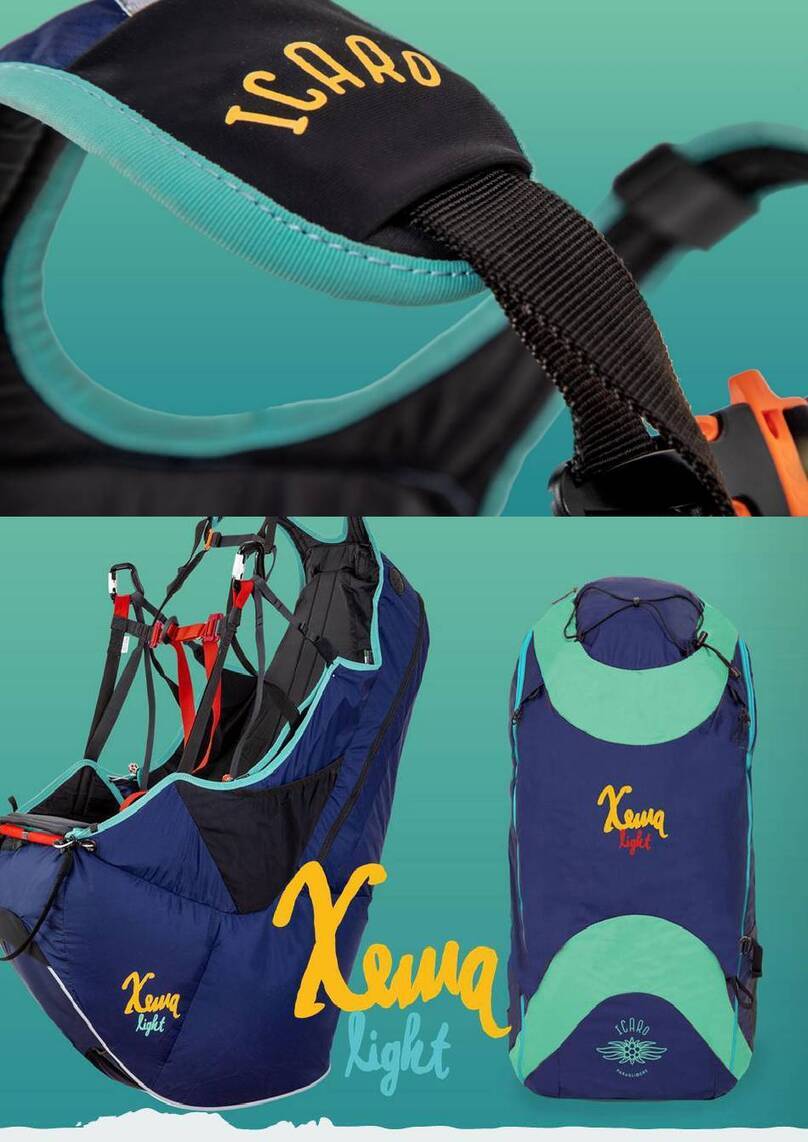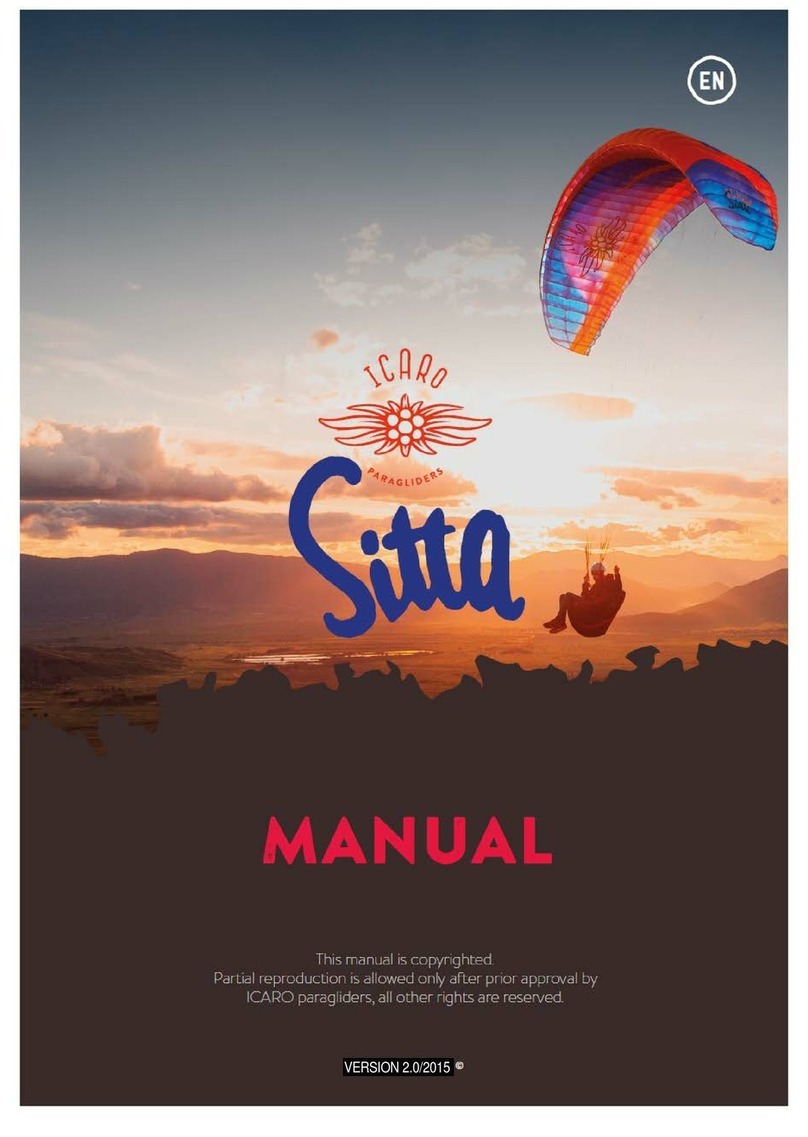Page 8
•Separate the line groups carefully and bring the risers in order. All lines must
run freely from harness to canopy. It is equally important that the lines are
unhindered and cannot get caught up during the launch.
•Check your harness and make sure that all connections to pilot are correctly
closed. Check that all karabiners are closed and can not be opened
accidentally in flight, the risers are not twisted and the TSO is set to the same
length on both sides!
•Check canopy (all cells are open), wind direction and airspace.
Launch
The most important thing during the take-off is, like at all other gliders too, not the
force but the constancy of the pull. At the start we advice to fix the accelerator
with the Velcro which is attached at the front of the sitting board, in order to avoid
tripping while pulling up the glider or when starting up.
Hold the inner A-risers and the handles of the brakes and use progressive
pressure on the A-risers and the energy of your own body weight until the wing is
fully inflated overhead. The canopy is inflated quickly.
When there is no pull from the lines use slight pressure on the brake. After a few
accelerating steps and at the same time let go of the brakes gently, you will take
off. Then use slight pressure again on the brakes to fly at a speed with minimal
sink rate.
When there is strong wind the reverse launch technique is recommended. Holding
the brakes, turn around to face the wing passing one set of risers over your head
as you turn. We suggest building a "wall" by partially inflating your glider on the
ground, thus sorting out the lines thoroughly.
Check the airspace is clear and gently pull the glider up with inner riser. When the
glider is overhead, check it gently with the brakes, turn and launch. In stronger
winds, be prepared to take a couple of steps towards the glider as it inflates and
rises.
Do not accelerate until the canopy has risen above the propeller wash. The motor
thrust should be as horizontal as possible (pay attention to the position of your
body).
Active flying
When flying in strong thermals release the brakes and reduce the motor's rpm so
that you do not go into a dynamic stall. However, when you are leaving a thermal,
brake the canopy well and increase the rpm so as to avoid pitching forward and a
possible frontal tuck. We advise you to apply the brakes at all times whilst flying in
turbulences. You hereby increase the opening angle and the wing is more stable.
At the same time the pilot has a better feeling for the canopy via the brakes.
This type of flight technique is called “active flying”. The pilot may roll his body with
weight shift to move with the glider when the glider rolls to the right or left. These
subtle adjustments keep the glider flying smoothly.
The more turbulent the weather conditions and when near the ground, the
less acceleration should be used. Using the accelerator decreases the angle
of attack and can make the glider more prone to collapse.
Do not use the acceleration system and brakes at the same time! It is very
dangerous to use both simultaneously as it can result in serious collapses.
